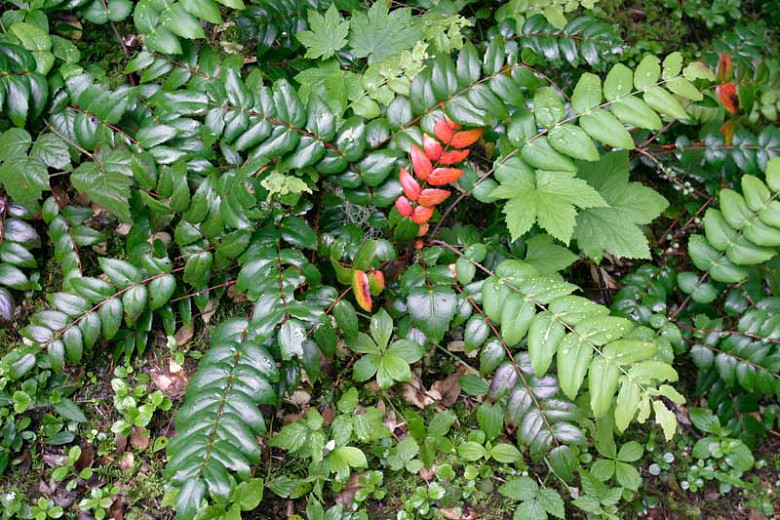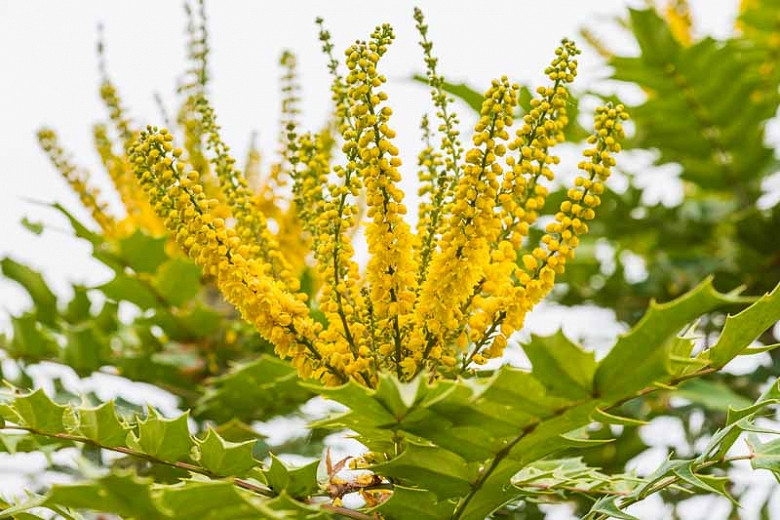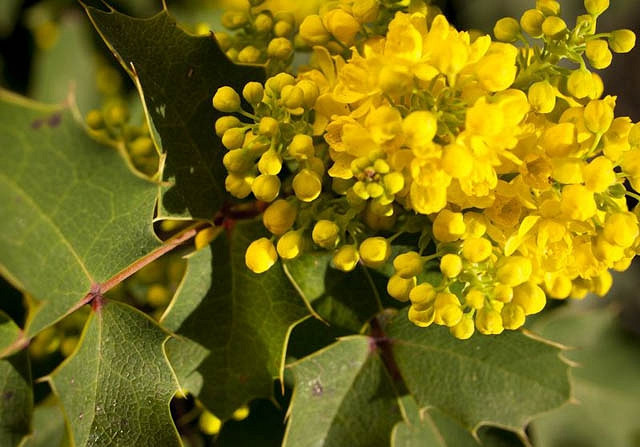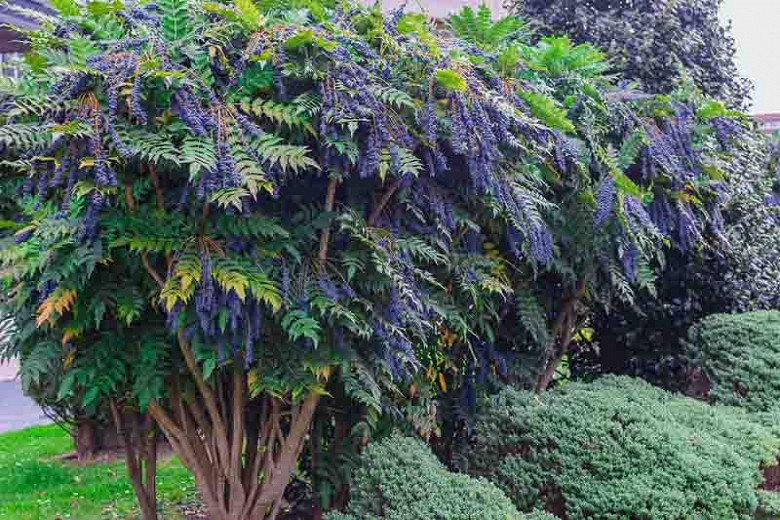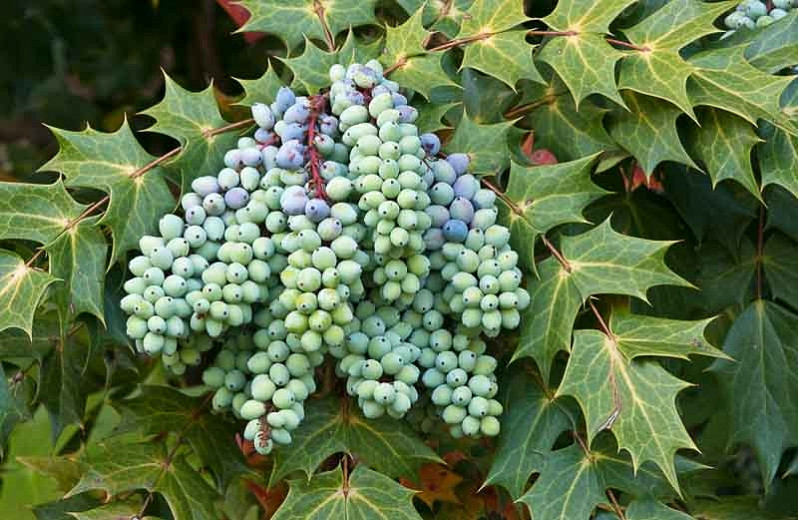Mahonia nervosa (Cascade Mahonia)
A popular ornamental, Mahonia nervosa (Cascade Mahonia) is a low-growing rhizomatous evergreen shrub with multi-season interest. In mid-spring to early summer, erect racemes densely packed with 30-70 cheerful canary-yellow flowers appear above the leaves. They are followed by clusters of waxy blue berries in the fall. Resembling small grapes, they are tart but edible. Native peoples of the Pacific Northwest traditionally ate the fruits and made medicinal teas from the boiled roots. The fruits are readily eaten by many small birds and mammals. The evergreen pinnately compound foliage of bristle-toothed, glossy emerald green leaves, 12-18 in. long (30-45 cm), often turns a striking reddish-purple in winter after exposure to cold temperatures. Cascade Mahonia slowly spreads by underground rhizomes to form a loose ground cover. Although it multiplies well under cultivation, it does not form dense thickets. Adaptable to difficult growing situations, it is also a good choice for steep slopes. Its attractive foliage and short stature make it a particularly effective border plant.
- Grows up to 2 ft. tall (60 cm) and 4 ft. Wide 120 cm).
- A full sun to deep shade lover, this plant is easily grown in average, dry to moist, acidic, well-drained soils. Prefers moist, humus-rich soils. Flowers and berries are more prolific in the sun. Drought tolerant once established.
- No serious pest and disease issues. Keep an eye out for rust and powdery mildew. Cascade Mahonia is relatively low in palatability to most big game species and domestic livestock.
- Perfect as for banks and slopes (erosion control), woodland gardens, or as a ground cover.
- Little pruning is required other than the removal of dead or broken limbs.
- Easily propagated from seed and from rhizomes or stem cuttings. However, plants may be slow to establish.
- Native to California, Idaho, Oregon, Washington, and British Columbia.
Requirements
| Hardiness | 5 – 9 |
|---|---|
| Plant Type | Shrubs |
| Plant Family | Mahonia |
| Exposure | Full Sun, Partial Sun, Shade |
| Season of Interest | Spring (Early,Mid,Late)Summer (Early,Mid,Late)FallWinter |
| Height | 1' – 2' (30cm – 60cm) |
| Spread | 3' – 4' (90cm – 120cm) |
| Spacing | 36″ – 48″ (90cm – 120cm) |
| Water Needs | Low, Average |
| Maintenance | Low |
| Soil Type | Clay, Loam, Sand |
| Soil pH | Acid, Alkaline, Neutral |
| Soil Drainage | Moist but Well-Drained, Well-Drained |
| Characteristics | Showy, Evergreen, Fruit & Berries |
| Native Plants | United States, California, Pacific Northwest, Idaho, Oregon, Washington |
| Tolerance | Drought |
| Attracts | Birds |
| Garden Uses | Banks and Slopes, Beds and Borders, Ground Covers |
| Garden Styles | Informal and Cottage, Prairie and Meadow |

